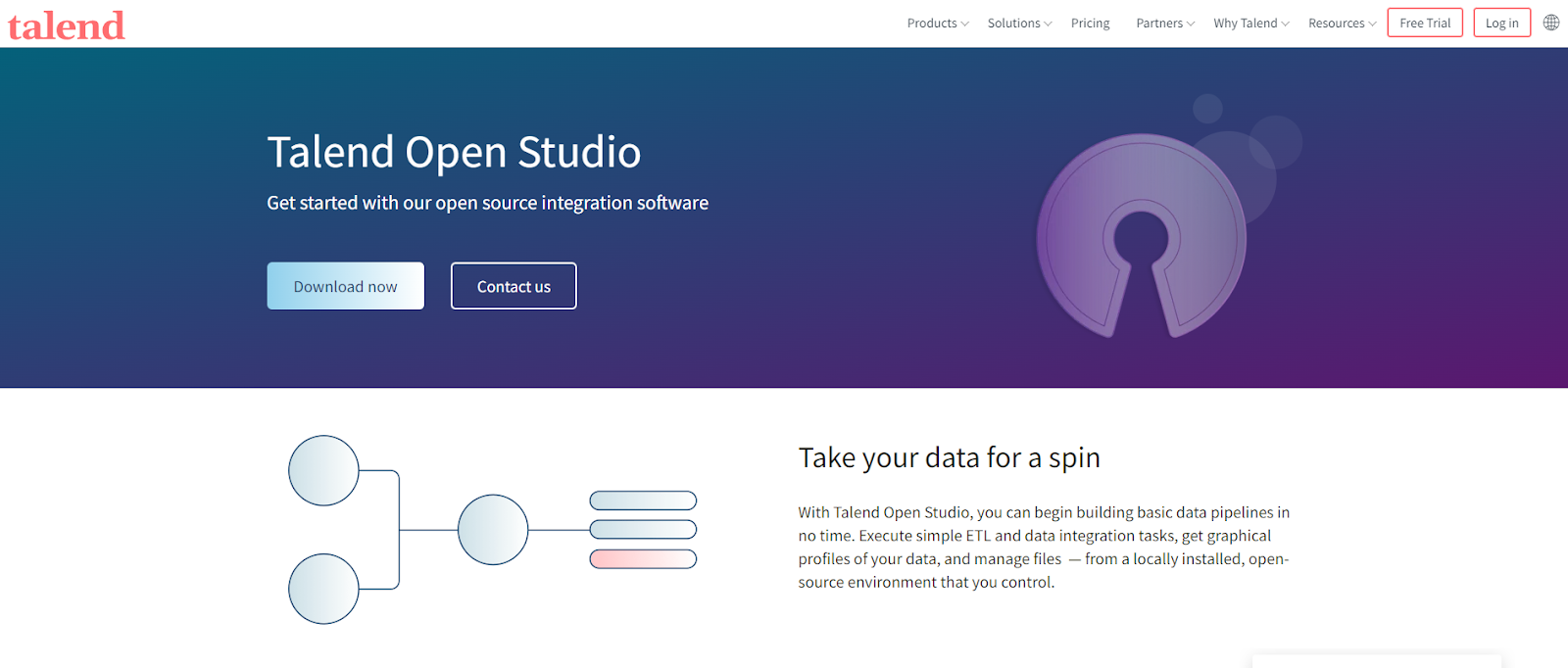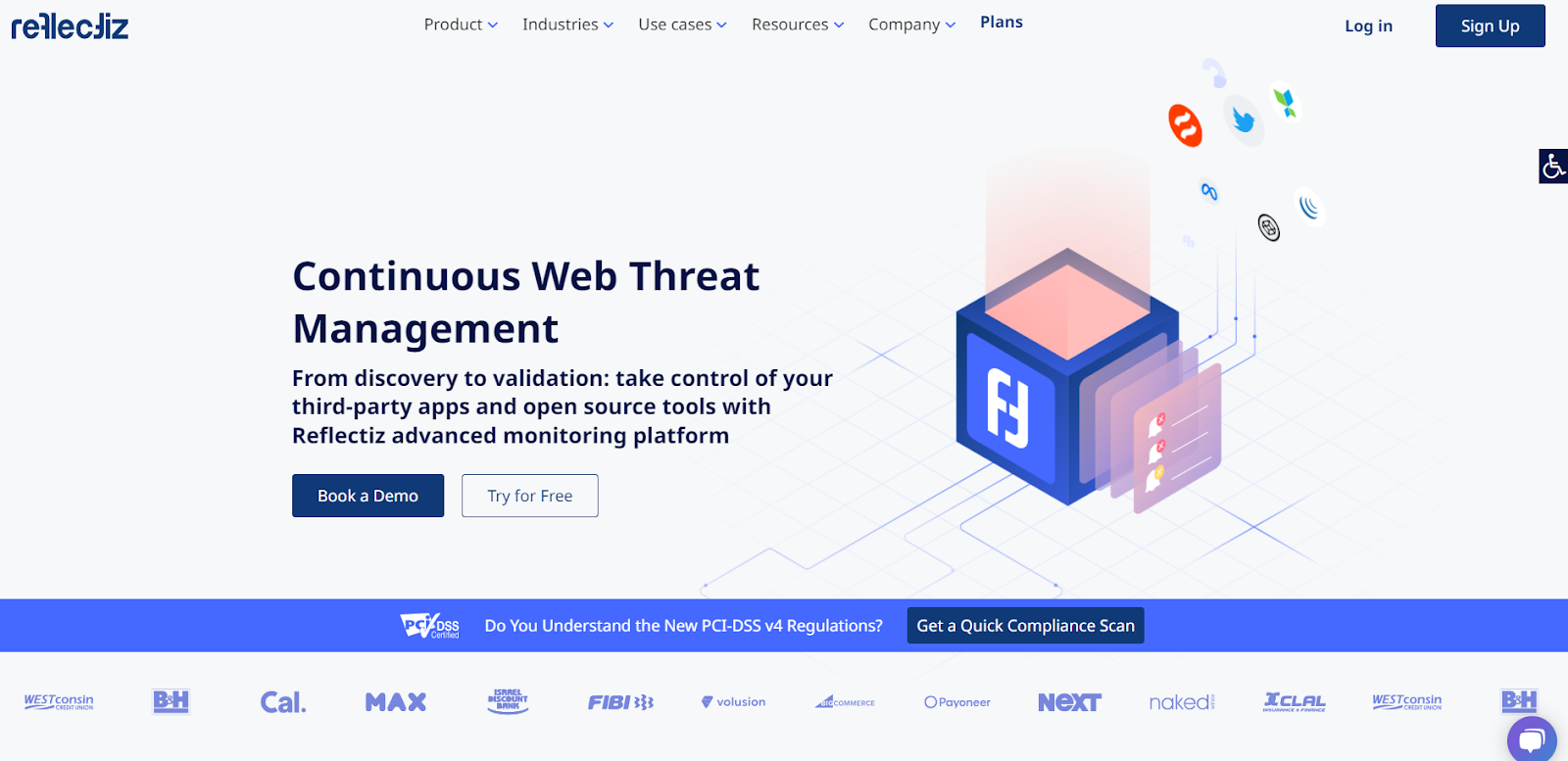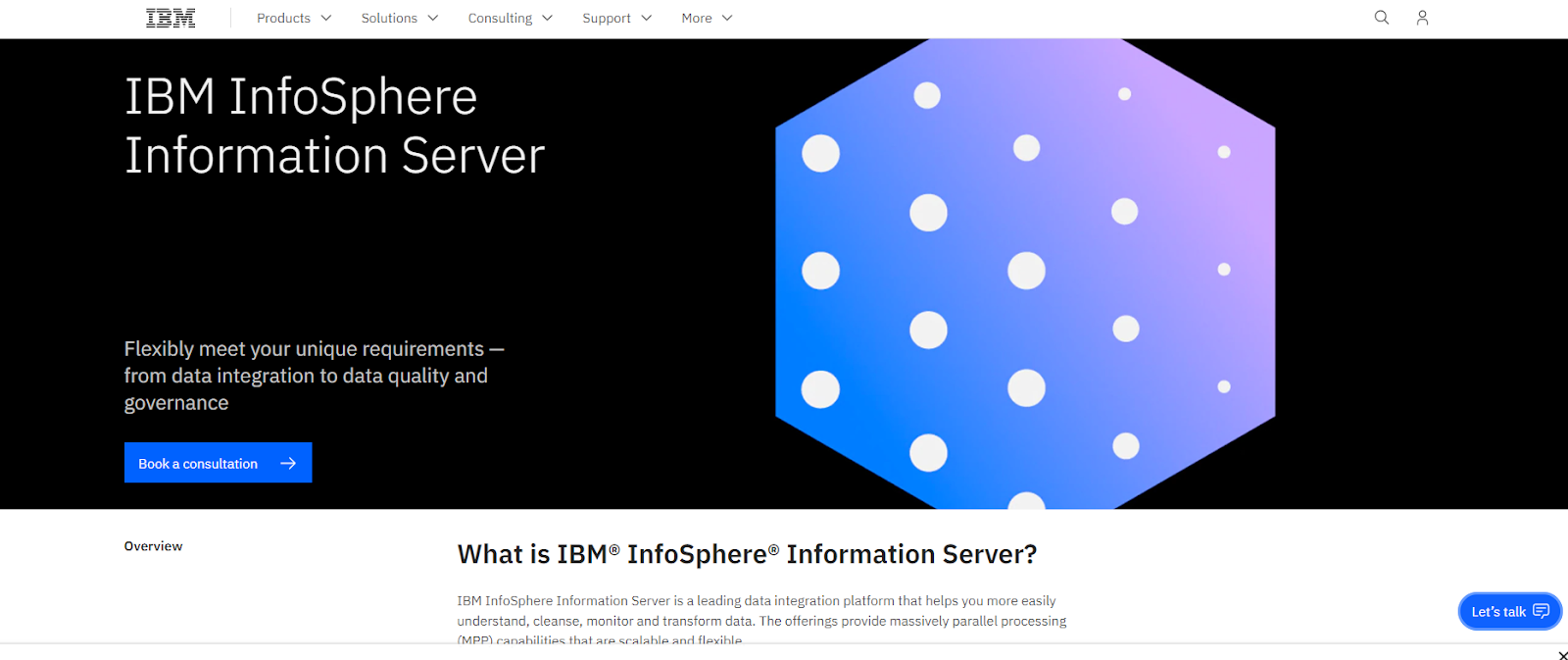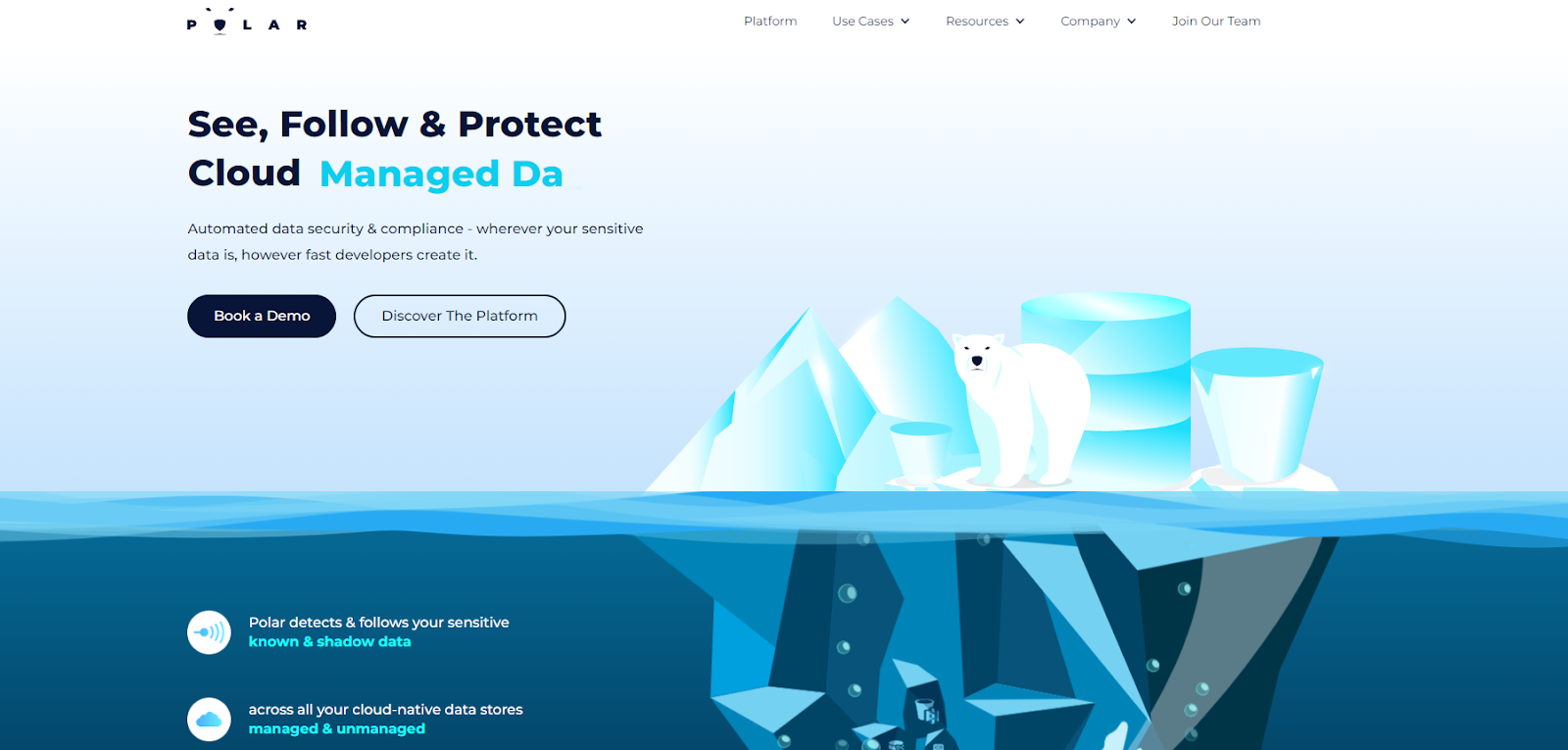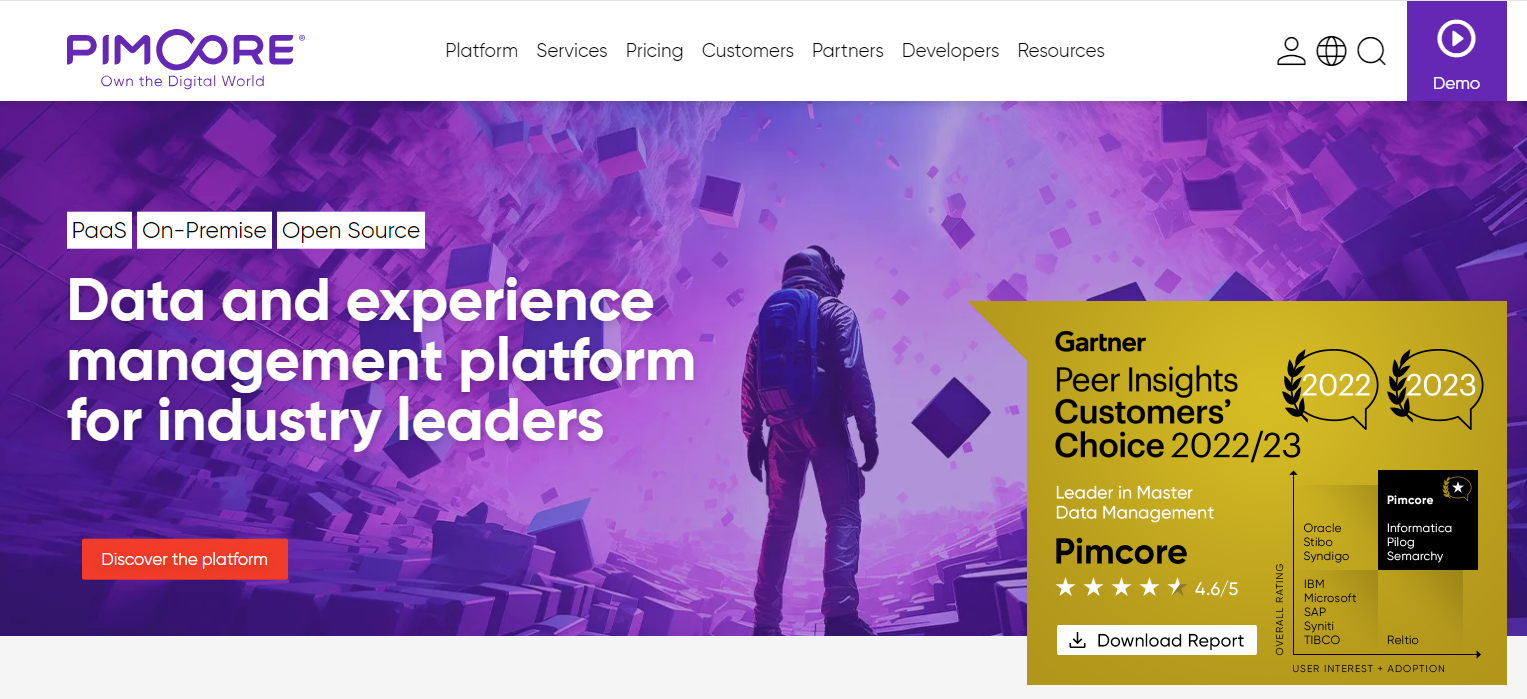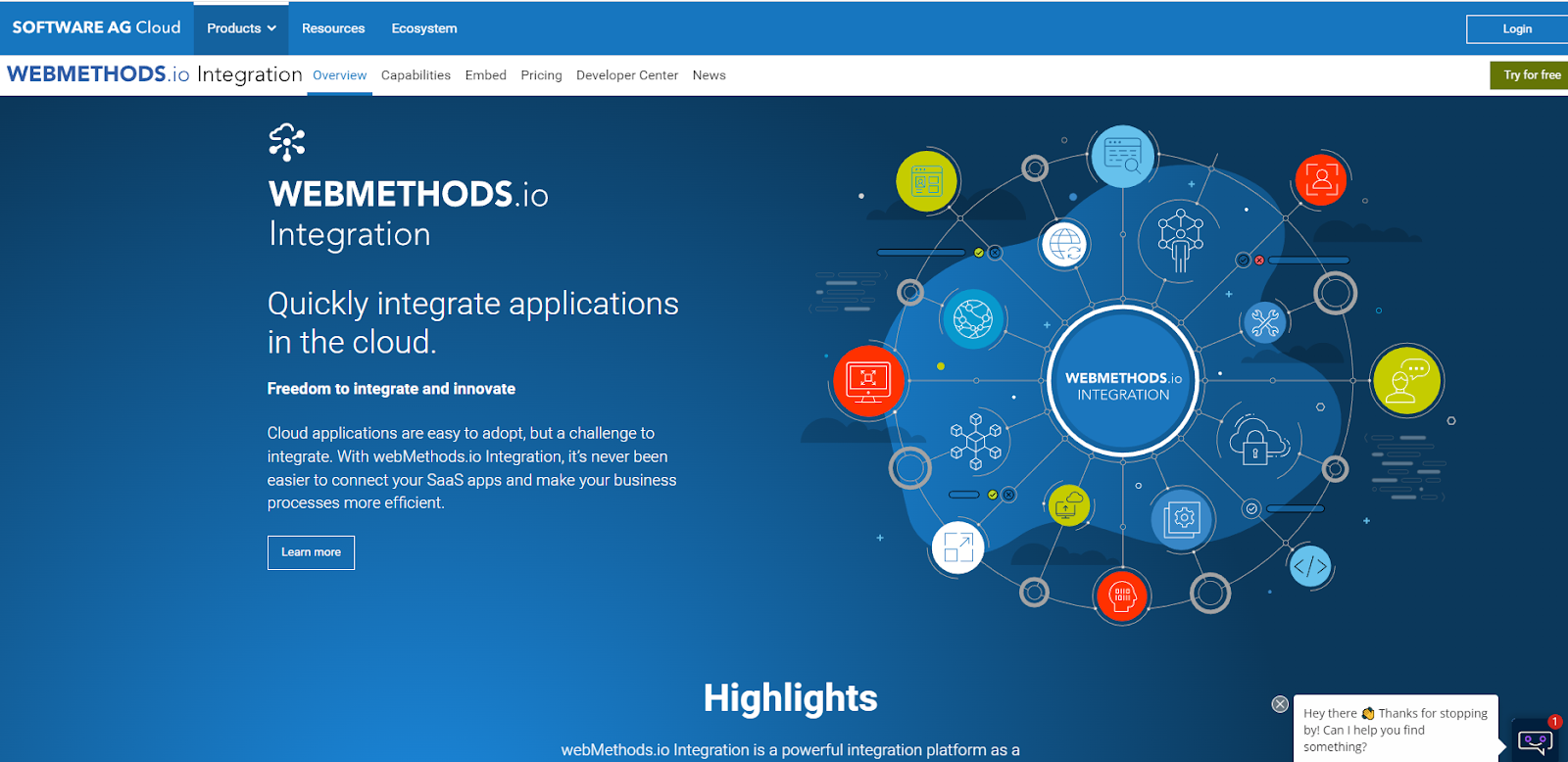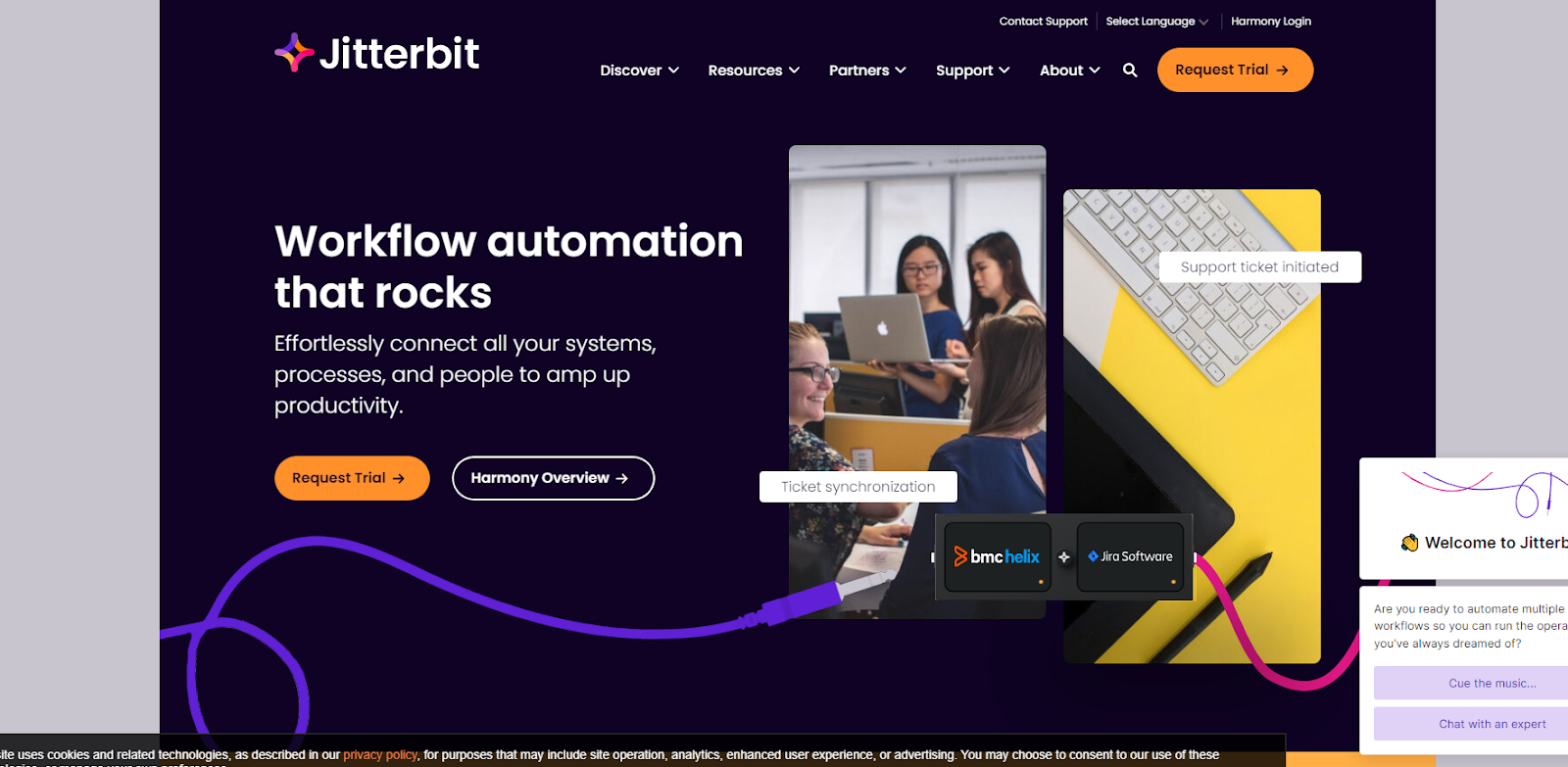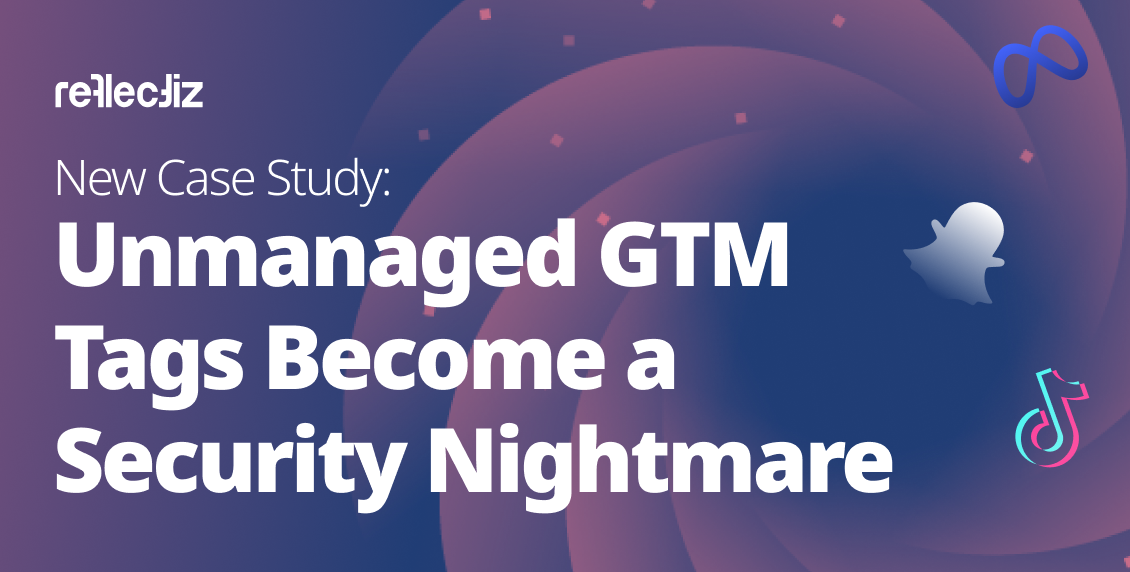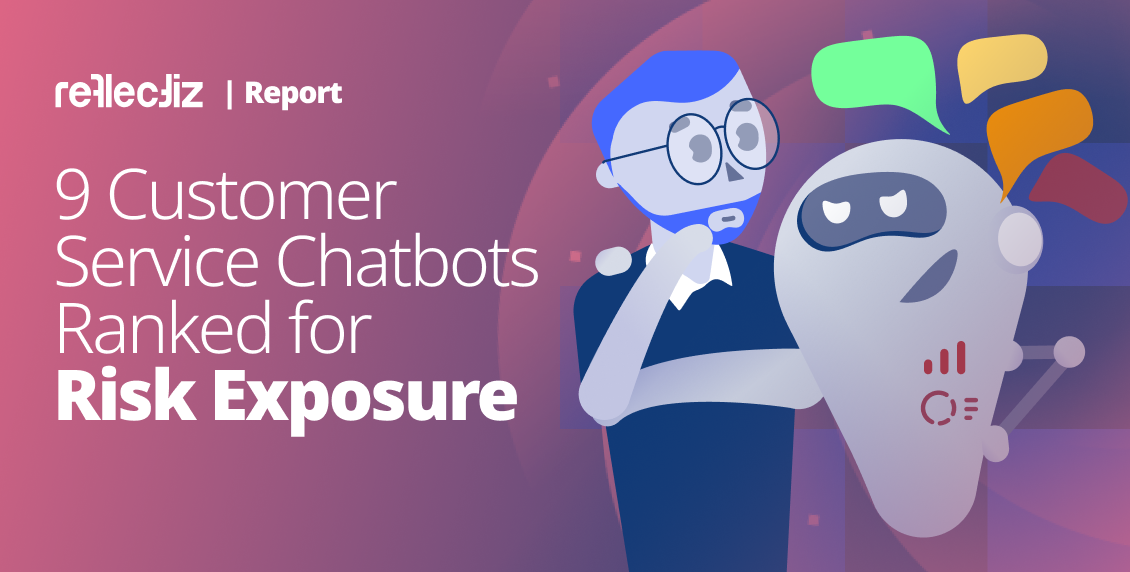The Most Reliable Data Mapping Automation Tools In 2023
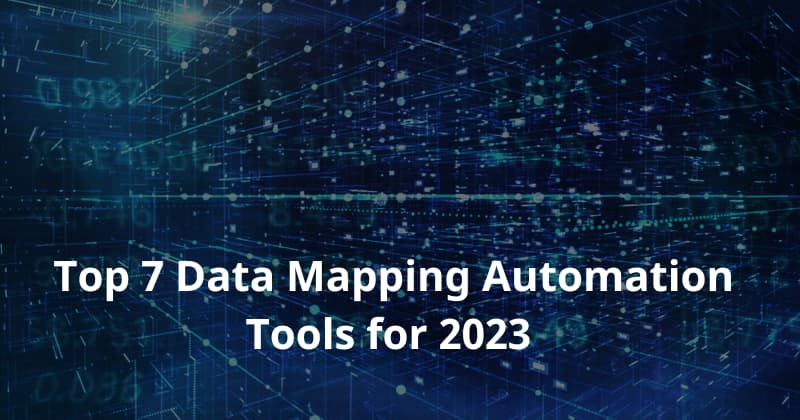
Are you tired of manually tracking and mapping your organization’s data flows? Do you want to improve your data security and compliance posture but don’t have the time or resources to do it manually? Look no further! We will introduce you to the top 7 data mapping automation tools for 2023.
These cutting-edge tools will help you automatically discover, classify, and map your sensitive data, protecting it from potential risks and violations. But first, what is data mapping anyway?
What is data mapping and why it matters
Data mapping helps organizations deal with disjointed, inconsistent data so they can improve the efficiency and effectiveness of their operations or provide a better customer experience.
Data mapping is the process of creating a correspondence between two different sets of data, which can help integrate different data sources and convert data from one format to another. This is important because it allows different data sets to be used together, ensuring that the data is accurate and consistent.
Here are some use cases for data mapping.
In the financial sector:
Data mapping can be used to integrate different financial systems, such as a trading platform and a risk management system. This can help improve financial operations and better risk management and compliance.
In eCommerce:
Data mapping can be used to integrate an eCommerce platform and a customer relationship management system. This can help improve the customer experience by providing a more seamless and personalized experience across different channels.
In healthcare:
Data mapping can be used to integrate different healthcare systems, such as electronic medical records and health information exchange systems. This can help improve the quality of care by providing healthcare providers with access to a complete picture of a patient’s health history.
How data mapping works
The data mapping process is made up of several steps, including:
- Data definition: This is the first step in data mapping and involves defining the data that will be mapped, and the source and target systems or formats.
- Matching source and target data: In this step, the data mapping tool will match the data from the source system to the corresponding data in the target system based on the definitions established in the previous step.
- Testing: After the data has been mapped, it is important to test the results to ensure that the data has been mapped correctly and that there are no errors.
- Deployment: Once the data has been tested and any errors have been corrected, the data mapping process can be deployed in the target system.
- Maintenance: After the data has been deployed, it is important to regularly maintain and update the data mapping to ensure that it remains accurate and up-to-date.
These steps can be automated using specialized data mapping tools, which can help to streamline the data mapping process and improve its accuracy and efficiency. These tools typically provide a user-friendly interface that allows users to define the data that will be mapped, as well as the source and target systems or formats. The tool will then automatically match the data and perform any necessary conversions. It can also be used to test and deploy the data mapping. Some data mapping tools may also include additional features for ongoing maintenance and updates.
Advantages of data mapping tools and how to choose one
Data mapping is a technique used to link data from different sources and to create a visual representation of that data. There are many benefits to using data mapping tools, including the ability to quickly and easily identify trends and patterns in your data, improve data quality, and reduce the risk of errors.
Here’s an expanded quick list of benefits:
- Improved data quality: Data mapping tools can help you identify and fix errors and inconsistencies in your data, which can improve the overall quality of your data and reduce the risk of errors.
- Enhanced visualization: Data mapping tools provide a visual representation of your data, which can make it easier to identify trends and patterns and gain insights from your data.
- Increased efficiency: Data mapping tools can automate many tedious and time-consuming tasks associated with data, such as linking and merging data from different sources. This can save you time and effort and allow you to focus on more important tasks.
- Better decision-making: By providing a clear and comprehensive view of your data, data mapping tools can help you make more informed and accurate decisions based on your data. This can help your organization to be more competitive and successful.
When choosing a data mapping tool, it’s important to consider the specific needs of your organization and the type of data you will be working with. Some key factors to consider include the tool’s ability to integrate with other systems, the level of support it offers, and its overall cost and complexity.
Top 7 Data Mapping Automation Tools for 2023
1. Talend Open Studio
What is Talend Open Studio?
Talend Open Studio is a free, open-source data integration software tool. It is designed to help users integrate, cleanse, and manage their data in various systems, including databases, cloud applications, and big data platforms. Talend Open Studio provides a graphical interface and pre-built connectors that make it easy to work with a wide range of data sources and formats.
Who is Talend Open Studio for? Where do you use Talend Open Studio?
Talend Open Studio is designed for anyone who needs to integrate, cleanse, and manage data from different sources. This could include data analysts, data scientists, data engineers, and other professionals who work with data on a regular basis. It is particularly well-suited for organizations that need to integrate data from multiple systems or sources, or manage large volumes of data. Because it is open-source and free to use, Talend Open Studio is a good option for individuals and organizations with limited budgets.
Pros of using Talend Open Studio
- Free and open-source
- Has a graphical interface that makes it easy to use, even for users with no coding experience
- Comes with pre-built connectors that allow users to work with a wide range of data sources and formats
- Can be used for a variety of data integration tasks, including data migration, data cleansing, and data quality management
Cons of using Talend Open Studio
- It may require users to have some technical knowledge or experience to use it effectively.
- It may not be well-suited for very large or complex data integration projects that require specialized tools or expertise.
What people are saying about Talend Open Studio
“The best open source ETL tool” – Roman E. Data Engineer
2. Reflectiz
What is Reflectiz?
While not strictly a data mapping solution, Reflectiz is a platform that helps businesses monitor and manage the security of their websites by providing advanced threat detection and validation capabilities. This helps businesses identify and address security threats that may come from third-party applications and open-source tools, which are often not visible to standard security controls. Reflectiz also helps businesses comply with security and privacy regulations to avoid costly fines and reputational loss.
Who is Reflectiz for? Where do you use Reflectiz?
Reflectiz maps out all third-party activity on a website. It provides the resulting data to the website owner so they can see potential compliance issues and vulnerabilities. Reflectiz organizes raw data by mapping the website scripts, their actions and behaviors, and where they communicate the information they process. Additionally, it prevents data harvesting and helps ensure PCI compliance. Reflectiz can be used by any business with an online presence, including eCommerce companies, financial institutions, and healthcare organizations.
Pros of using Reflectiz
- Improved security: Reflectiz helps businesses protect their websites and customer data from client-side attacks and other security threats. Its innovative sandbox solution monitors and detects vulnerabilities in third-party and open-source applications that are integrated into a business’s online ecosystem.
- Comprehensive view of website security: Reflectiz provides a comprehensive view of a business’s website security, allowing it to prioritize and remediate risks and compliance issues.
- Remote execution: Reflectiz is executed remotely, so there is no need for installation. This makes it easy to use and allows businesses to start using the platform quickly and easily.
- Compliance with regulations: Reflectiz helps businesses comply with security and privacy regulations, avoiding costly fines and protecting their reputation.
- Streamlined digital asset risk management: Reflectiz offers a fully remote solution that maps all of a business’s digital assets into an accessible digital inventory, providing a streamlined approach to digital asset risk management.
Cons of using Reflectiz
- Cost: Reflectiz is a commercial product and may require a financial investment. However, the cost of using Reflectiz may be outweighed by the benefits it provides in terms of improved security and compliance with regulations.
- Limitations: Reflectiz is not a one-size-fits-all solution and may not be able to protect against all types of security threats. Businesses should carefully assess their security needs and consider whether Reflectiz is the right solution for their specific situation.
What people are saying about Reflectiz
“They have helped us so much in tuning their product to help make the product as easy to use as possible. The Reflectiz team is always available to meet to ensure our needs are addressed. They are a very professional and friendly team.” Chris R, Application Security Engineer
3. IBM InfoSphere
What is IBM InfoSphere?
IBM InfoSphere is a data integration and governance software platform that helps organizations manage, integrate, and govern their data. It provides a range of tools and capabilities for extracting, transforming, and loading data from a variety of sources, as well as for managing the data throughout its lifecycle. InfoSphere also includes features for data quality and governance, such as data profiling and cleansing, metadata management, and data lineage tracking. It is designed to help organizations gain a comprehensive view of their data and make more informed decisions.
Who is IBM InfoSphere for? Where do you use IBM InfoSphere?
IBM InfoSphere is typically used by businesses and organizations to integrate, manage, and govern their data. This can include tasks such as extracting data from multiple sources, cleansing and transforming the data, enriching the data with additional information, and loading the data into a target system or data warehouse. IBM InfoSphere can be used in multiple industries and sectors, including finance, healthcare, retail, manufacturing, and government. Some common use cases include customer data integration, master data management, data migration, data quality management, and data governance.
Pros of using IBM InfoSphere
- Improved data quality and accuracy
- Enhanced data security and compliance
- Greater insights and business value from data
- More efficient and effective data management processes
- Reduced costs and improved resource utilization
Cons of using IBM InfoSphere
- High upfront costs and complex implementation process
- Limited flexibility and customizability
- Dependence on IBM support and expertise
- Potential compatibility issues with other software platforms
- Possible learning curve for users to become proficient with the software
What people are saying about IBM InfoSphere
“It does the job and helps to establish company-wide data management practices.” – Tony L, Solution Architect
4. Polar Security
What is Polar Security?
Polar Security is a data security and compliance platform designed to help organizations protect their sensitive data. It automatically detects and tracks managed, unmanaged, and shadow data stores across all of a company’s cloud-native data stores. It uses this information to prioritize actual and potential risks and provides actionable insights for continuous security and compliance.
Who is Polar Security for? Where do you use Polar Security?
Polar Security is designed for organizations that want to protect their sensitive data. It can be used across all of a company’s cloud-native data stores, including managed and unmanaged data stores. By providing a complete inventory of a company’s data stores and automatically detecting and classifying sensitive data, it can help organizations track and protect their data, prevent sensitive data leakage and compliance violations, and receive actionable insights and recommendations for mitigating potential risks.
Pros of using Polar Security
- Automated data security and compliance
- Continuous monitoring and risk assessment
- Improved compliance and regulatory adherence
- Increased data visibility and control
Cons of using Polar Security
- Depending on the size and complexity of an organization’s data environment, implementing and using Polar Security’s platform may require specialized knowledge and expertise, which may not be readily available in-house.
5. Pimcore
What is Pimcore?
Pimcore is an open-source data and experience management platform that enables users to create and manage digital customer experiences across multiple channels and devices. Moreover, it provides a suite of tools for managing content, assets, products, and customer data, as well as for implementing e-commerce and omnichannel strategies.
Who is Pimcore for? Where do you use Pimcore?
Pimcore is designed for businesses that need a comprehensive platform for managing their digital experiences and customer data. It is often used by e-commerce businesses, as well as by enterprises in industries such as media, manufacturing, and finance. Pimcore can be used by marketing teams, e-commerce teams, and IT departments to manage content, assets, products and customer data. This way it creates and delivers engaging and personalized experiences to customers across multiple channels and devices.
Pros of using Pimcore
- Pimcore is highly flexible and customizable, allowing you to adapt it easily to your specific needs and requirements.
- It has a strong community of users and developers who regularly contribute new features and updates to the platform.
- It is open-source, so it is free to use and modify. This means that you can easily customize it to suit your specific needs without incurring any additional costs.
Cons of using Pimcore
- Being highly customizable, it can take some time and effort to set up and configure the platform to meet your specific needs. This may require the help of a skilled developer or technical expert.
- It is a complex platform with a wide range of features and tools. This can make it difficult for users who are new to the platform to learn and use all of its features effectively.
What people are saying about Pimcore
“Pimcore helped us to connect e-commerce and retail stores seamlessly” – Stephan A, managing director
6. WebMethods
What is WebMethods?
The WebMethods platform includes tools for integrating applications, managing data and documents, and automating processes. Organizations often use it to create seamless, end-to-end business processes that span different systems and departments.
Who is WebMethods for? Where do you use WebMethods?
WebMethods is for businesses and organizations that want to build and integrate applications, manage data and documents, and automate processes. It is often used by enterprises that need to integrate legacy systems with newer technologies and for companies that want to automate and optimize their business processes.
For example, financial services companies may use WebMethods to integrate and automate their accounting and billing processes. A healthcare organization may use WebMethods to manage and automate the exchange of patient data between different systems.
Pros of using WebMethods
- Highly scalable and flexible platform
- Offers a wide range of features and tools, including integration, automation, and API management, making it a comprehensive solution for managing business processes and data.
Cons of using WebMethods
- WebMethods is a complex platform with a wide range of features and tools. This can make it difficult for users to learn and use all of its features effectively.
- Can be expensive, especially for larger organizations with complex requirements. This may not be a feasible option for businesses with limited budgets.
What people are saying about WebMethods
“Good products. Easy to use. Amazing product documentation. Awesome customer support” – Rajesh P, support consultant
7. Jitterbit
What is Jitterbit?
Jitterbit is a type of software that is used to integrate different applications and systems, allowing them to work together and share data. It is often used in business settings to connect legacy systems with newer technologies or to integrate different systems that are used by different departments or teams within an organization. Jitterbit can help to improve efficiency and productivity by enabling seamless data sharing and communication between different systems.
Who is Jitterbit for? Where do you use Jitterbit?
Jitterbit is typically used by organizations that need to integrate different systems to improve efficiency. It can be used by IT departments and professionals, as well as business users who need to connect different systems and share data between them. Jitterbit is also often used by companies that are in the process of digital transformation. It can help to bridge the gap between legacy systems and newer technologies.
Pros of using Jitterbit
- By enabling seamless data sharing and communication between different systems, Jitterbit can help to improve the way that businesses and organizations operate.
- Jitterbit can make it easier for businesses to integrate new systems and technologies into their existing infrastructure, allowing them to take advantage of the latest advances without disrupting their existing operations.
- Can help to ensure that data is accurately and consistently shared between different systems, improving the overall quality and reliability of the data that the organization uses.
Cons of using Jitterbit
- Initial setup and configuration can be complex
- Ongoing maintenance and support can be challenging
- Jitterbit is a general-purpose integration solution, and it may not be the best option for every situation.
What people are saying about Jitterbit
“Easy to quickly transfer data to and from a Salesforce.com CRM/Service Cloud and schedule the job” – Verified User in Consumer Goods
Data security and compliance are never one and done
In fact, it’s a continuous process that requires ongoing attention and effort. This is why data mapping automation tools are so important; they provide the visibility and control organizations need to protect their sensitive data and avoid costly compliance violations.
By using data mapping automation tools, organizations can gain a complete inventory of their data stores, automatically detect and classify sensitive data, and continuously monitor and assess potential risks and vulnerabilities. This can help them protect their sensitive data and maintain compliance with relevant regulations, which can improve their overall security posture and reduce their risk of data breaches or other security incidents.
Precisely because data compliance and security are never one and done, all businesses should think about the bigger picture of data security when automating data mapping. If you’re an eCommerce business, look at protecting customer data from homepage to checkout. Financial services providers instead focus on protecting data from the growing risk created by third-party applications. And healthcare providers must protect patients’ sensitive data against PHI harvesting and digital supply chain risks.
Subscribe to our newsletter
Stay updated with the latest news, articles, and insights from Reflectiz.
Related Articles
Your Website looks great!
But what’s happening behind the scenes?
Discover your website blind spots and vulnerabilities before it’s too late!




